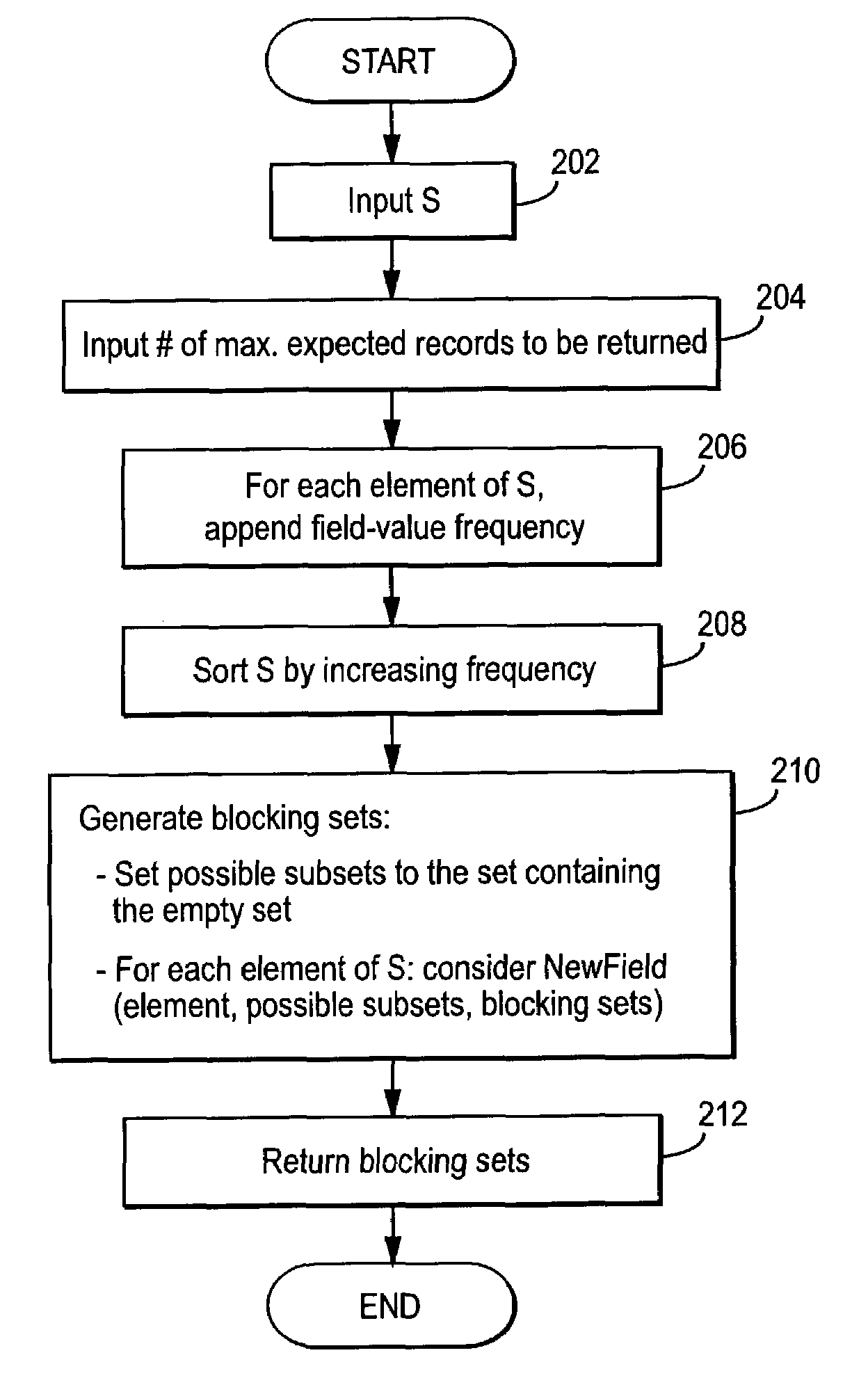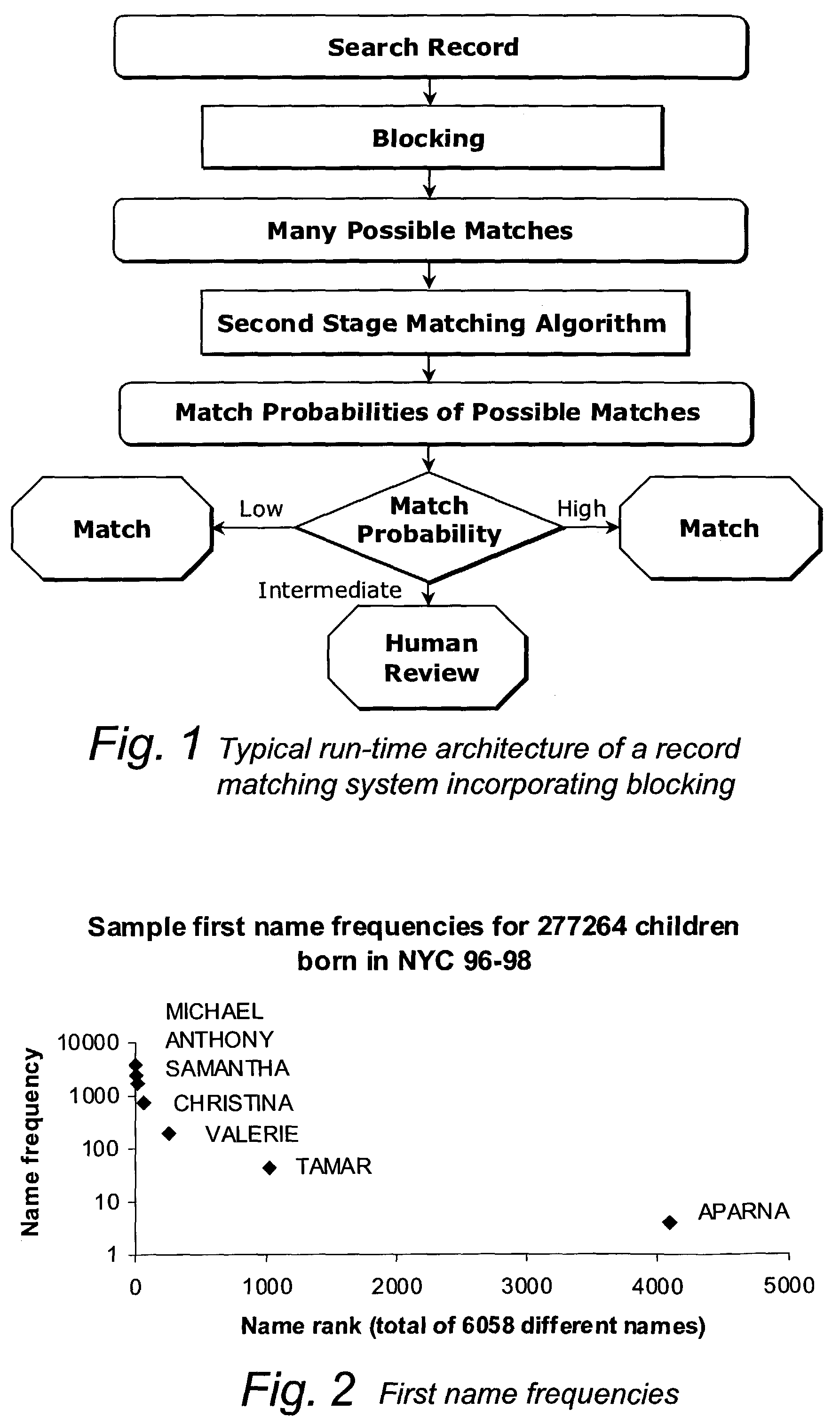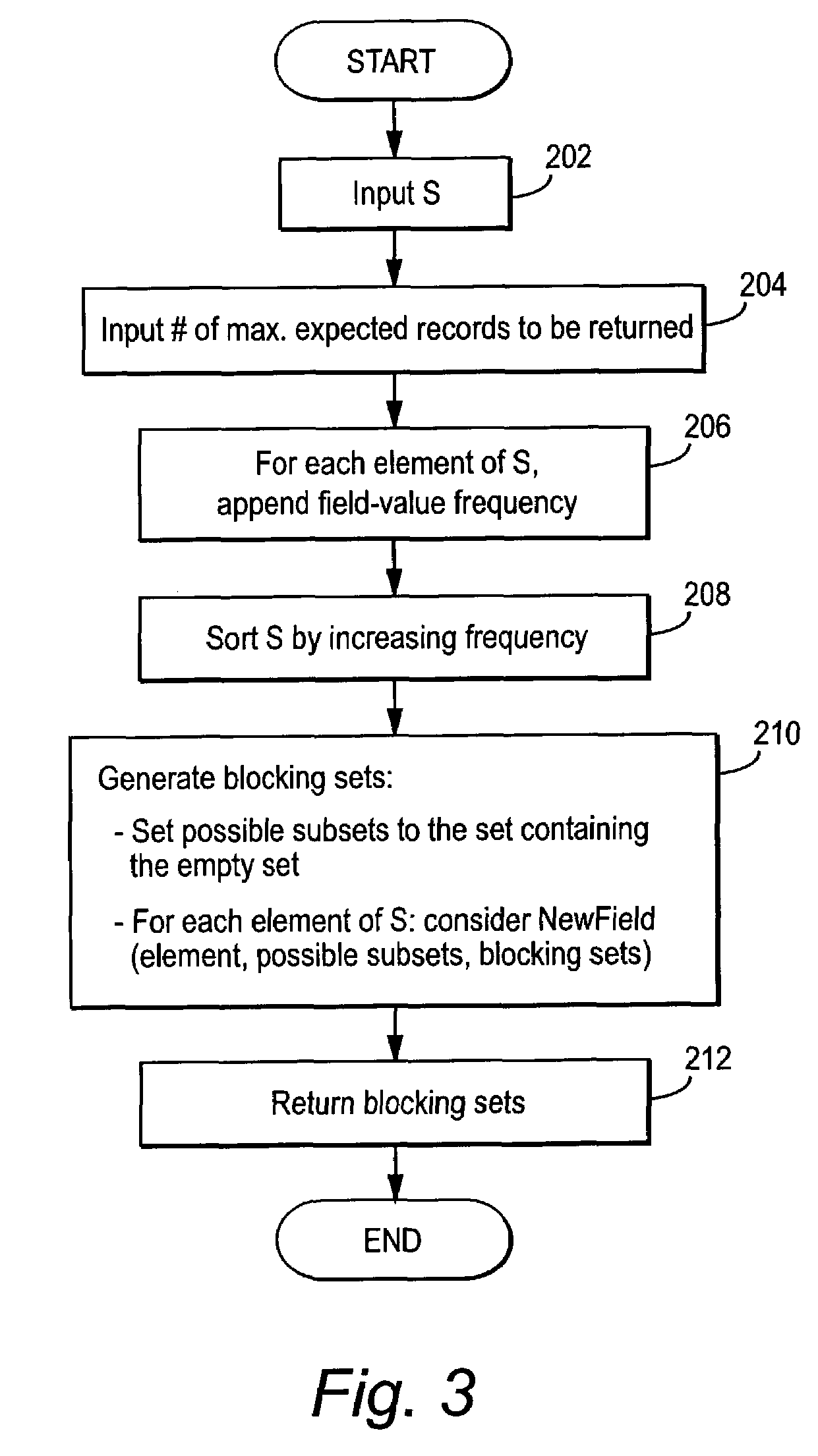Automated database blocking and record matching
a database and record technology, applied in the field of record matching, can solve the problems of high cost, time-consuming and expensive, and difficulty in maintaining large databases, and achieve the effect of low cos
- Summary
- Abstract
- Description
- Claims
- Application Information
AI Technical Summary
Benefits of technology
Problems solved by technology
Method used
Image
Examples
Embodiment Construction
[0019]FIG. 1 shows an exemplary non-limiting overall typical run-time architecture of a record matching system incorporating blocking. As shown in FIG. 1, the process begins by searching records and performing a blocking step to limit the number of records that are returned by the search query. The blocking step returns many possible matches. A second stage matching algorithm is then applied to discover approximate or actual matches. Such a second stage matching algorithm may for example be as described in U.S. Pat. No. 6,523,019. Such an algorithm can match the probabilities of possible matches. An optional final human review step may be employed if high accuracy is required.
[0020]In one illustrative non-limiting implementation, given a search record, S, for which we are trying to find approximate matches in database D, blocking is the preferred first phase of an approximate record matching system. In this exemplary instances, blocking identifies a set of records, B, from D which a...
PUM
 Login to View More
Login to View More Abstract
Description
Claims
Application Information
 Login to View More
Login to View More - R&D
- Intellectual Property
- Life Sciences
- Materials
- Tech Scout
- Unparalleled Data Quality
- Higher Quality Content
- 60% Fewer Hallucinations
Browse by: Latest US Patents, China's latest patents, Technical Efficacy Thesaurus, Application Domain, Technology Topic, Popular Technical Reports.
© 2025 PatSnap. All rights reserved.Legal|Privacy policy|Modern Slavery Act Transparency Statement|Sitemap|About US| Contact US: help@patsnap.com



